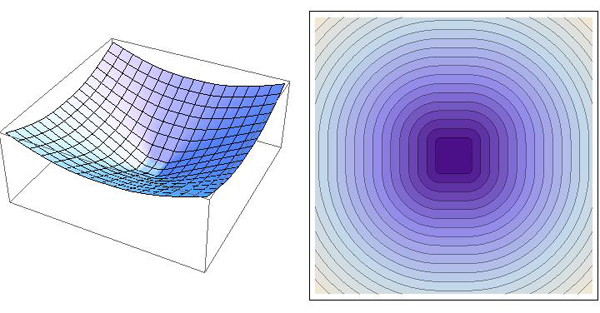Here is a function $f(x,y)$ which is 0 inside the square $C=[\pm1,\pm1]$,
and outside that square
has value equal to the Euclidean distance $d( p, C )$ from $p=(x,y)$ to the boundary of $C$.
[I am trying to follow Pietro Majer's suggestion, as far as I understand it.]
It is not a surface of revolution
(but it is centrally symmetric).
Are its gradient descent paths geodesics?
I think so...

Left above: $f(x,y)$. Right above: Level sets of $f$.
Below: $\nabla f$.

And here (below) is a closeup of the function defined using squared distance
$[d( p, C )]^2$, as per Willie Wong's suggestion:

Joseph O'Rourke
- 150.8k
- 36
- 358
- 958
